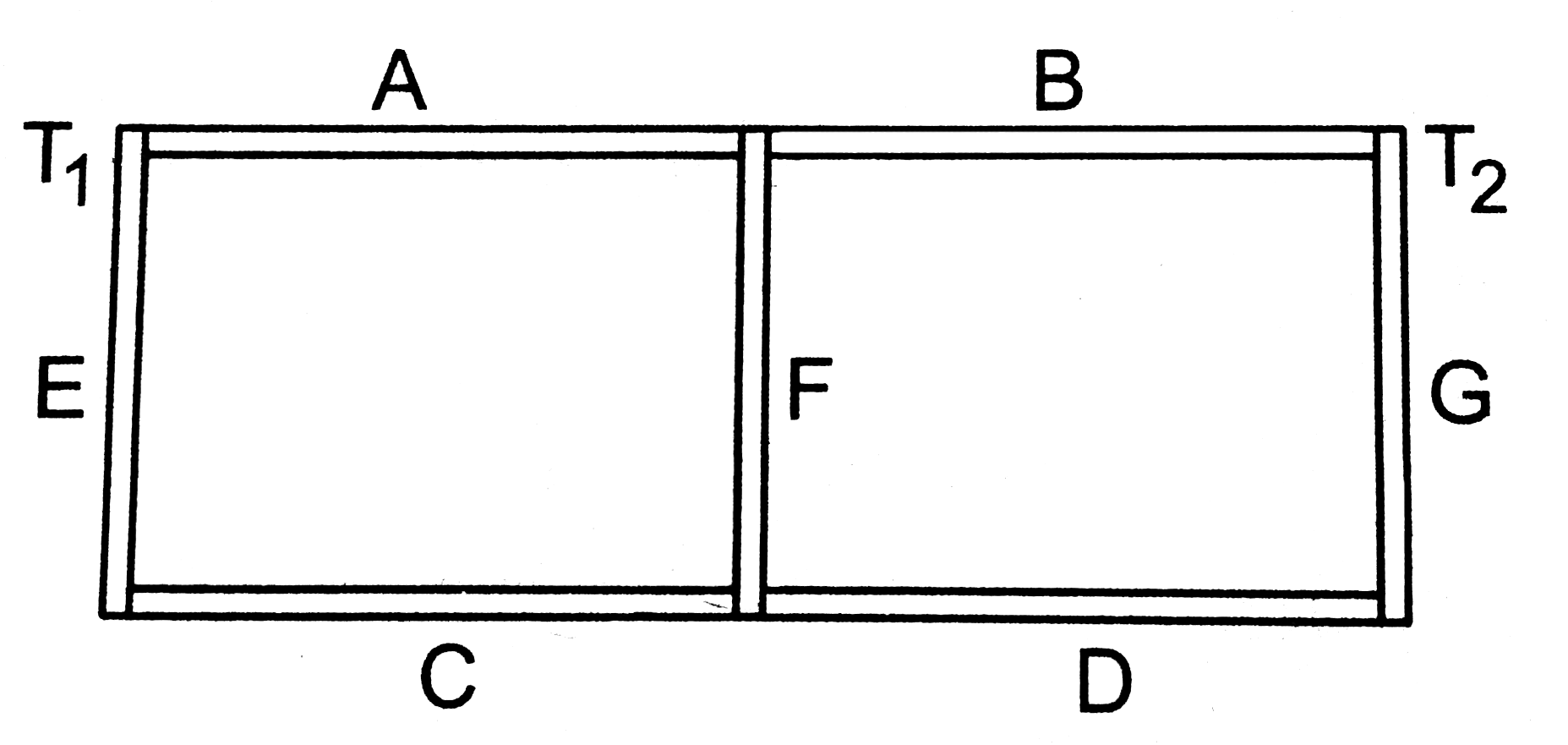If K1= Rate constant at temperature T1 and k2 rate constant at temperature T2 for a first order reaction, then which of the following relation is correct ?
log k1k2=2.303EaR(T2−T1T1T2)
logk2k1=Ea2.303R(T2−T1T1T2)
log k2k1=Ea2.303R(T1T2T2+T1)
log k1k2=Ea2.303R(T1T2T2−T1)
The correct Answer is:B
To solve the problem regarding the relationship between the rate constants k1 and k2 at different temperatures T1 and T2 for a first-order reaction, we can use the Arrhenius equation. Here’s a step-by-step breakdown of the solution:
Step 1: Write the Arrhenius Equation for k1
The Arrhenius equation relates the rate constant k to the temperature T as follows:
k1=Ae−EaRT1
where:
- k1 = rate constant at temperature T1
- A = Arrhenius constant (frequency factor)
- Ea = activation energy
- R = universal gas constant
- T1 = temperature in Kelvin
Step 2: Take the Natural Logarithm of k1
Taking the natural logarithm of both sides gives:
lnk1=lnA−EaRT1
Step 3: Write the Arrhenius Equation for k2
Similarly, for the rate constant k2 at temperature T2:
k2=Ae−EaRT2
Step 4: Take the Natural Logarithm of k2
Taking the natural logarithm of both sides gives:
lnk2=lnA−EaRT2
Step 5: Subtract the Two Equations
Now, we subtract the equation for k1 from the equation for k2:
lnk2−lnk1=(lnA−EaRT2)−(lnA−EaRT1)
This simplifies to:
lnk2−lnk1=−EaRT2+EaRT1
lnk2k1=EaR(1T1−1T2)
Step 6: Convert to Logarithm Base 10
To convert from natural logarithm to common logarithm (base 10), we use the conversion factor:
lnx=2.303log10x
Thus, we have:
lnk2k1=2.303log10k2k1
Substituting this into our equation gives:
2.303log10k2k1=EaR(1T1−1T2)
Step 7: Rearranging the Equation
Rearranging the equation yields:
log10k2k1=Ea2.303R(1T1−1T2)
Conclusion
This relationship shows how the rate constants k1 and k2 are related to the temperatures T1 and T2 through the activation energy Ea and the gas constant R.
The Arrhenius equation relates the rate constant k to the temperature T as follows:
k1=Ae−EaRT1
where:
- k1 = rate constant at temperature T1
- A = Arrhenius constant (frequency factor)
- Ea = activation energy
- R = universal gas constant
- T1 = temperature in Kelvin
Taking the natural logarithm of both sides gives:
lnk1=lnA−EaRT1
Similarly, for the rate constant k2 at temperature T2:
k2=Ae−EaRT2
Taking the natural logarithm of both sides gives:
lnk2=lnA−EaRT2
Now, we subtract the equation for k1 from the equation for k2:
lnk2−lnk1=(lnA−EaRT2)−(lnA−EaRT1)
This simplifies to:
lnk2−lnk1=−EaRT2+EaRT1
lnk2k1=EaR(1T1−1T2)
To convert from natural logarithm to common logarithm (base 10), we use the conversion factor:
lnx=2.303log10x
Thus, we have:
lnk2k1=2.303log10k2k1
Substituting this into our equation gives:
2.303log10k2k1=EaR(1T1−1T2)
Rearranging the equation yields:
log10k2k1=Ea2.303R(1T1−1T2)
This relationship shows how the rate constants k1 and k2 are related to the temperatures T1 and T2 through the activation energy Ea and the gas constant R.
Topper's Solved these Questions
- BOOK - VMC MODULES ENGLISHCHAPTER - CHEMICAL KINETICS EXERCISE - Level-250videos
CHEMICAL KINETICS
- BOOK - VMC MODULES ENGLISHCHAPTER - CHEMICAL KINETICS EXERCISE - Level-2 ( Numerical Value Type for JEE Main )15videos
CHEMICAL KINETICS
- BOOK - VMC MODULES ENGLISHCHAPTER - CHEMICAL KINETICS EXERCISE - Level-0 (Long Answer Type )6videos
CHEMICAL KINETICS
- BOOK - VMC MODULES ENGLISHCHAPTER - CHEMICAL EQUILIBRIUMEXERCISE - IN-CHAPTER EXERCISE - G10videos
CHEMICAL EQUILIBRIUM
- BOOK - VMC MODULES ENGLISHCHAPTER - CHEMICAL THERMODYNAMICS EXERCISE - IN - CHAPTER EXERCISE - L10videos
CHEMICAL THERMODYNAMICS
Similar Questions
If K1 is the equilibrium constant at temperature T1andK2 is the equilibrium constant at temperature T2and If T2>T1 and reaction is endothermic then
View SolutionThe activation energies of two reactions are E1 & E2 with E1>E2. If temperature of reacting system is increased from T1 (rate constant are k1 and k2) to T2 (rate constant are k11 and k12) predict which of the following alternative is correct.
View SolutionTwo different first order reactions have rate consants k1andk2atT1(k1>k2) . If temperature is increased form T1toT2 ,then new consant become k3andk4 respeectively. Which among the following relartions is correct
View SolutionIf the rate constant for a first order reaction is k, the time (t) required for the completion of 99% of the reaction is given by :
View SolutionA : Rate constant increases with temperature.
R : Rate of exothermic reaction increases with temperature.View SolutionA solid at temperature T1 is kept in an evacuated chamber at temperature T2>T1 . The rate of increase of temperature of the body is propertional to
View SolutionFor a first order reaction, the unit of rate is _______ and that of rate constant is _______ .
View SolutionSeven rods A, B, C, D, E, F and G are joined as shown in figure. All the rods have equal cross-sectional area A and length l. The thermal conductivities of the rods are KA=KC=K0, KB=KD=2K0, KE=3K0, KF=4K0 and KG=5K0 . The rod E is kept at a constant temperature T1 and the rod G is kept at a constant temperature T2(T2>T1) . (a) Show that the rod F has a uniform temperature T=(T1+2T2)/3 . (b) Find the rate of heat flowing from the source which maintains the temperature T2 .
 View Solution
View SolutionPlots showing the variation of the rate constant (k) with temperature (T) are given below. The plot that follows the Arrhenius equation is
View SolutionAt a certain temperature, the first order rate constant k1 is found to be smaller than the second order rate constant k2. If Ea(1) of the first order reaction is greater than Ea(2) of the second order reaction, then as temperature is raised:
View Solution

